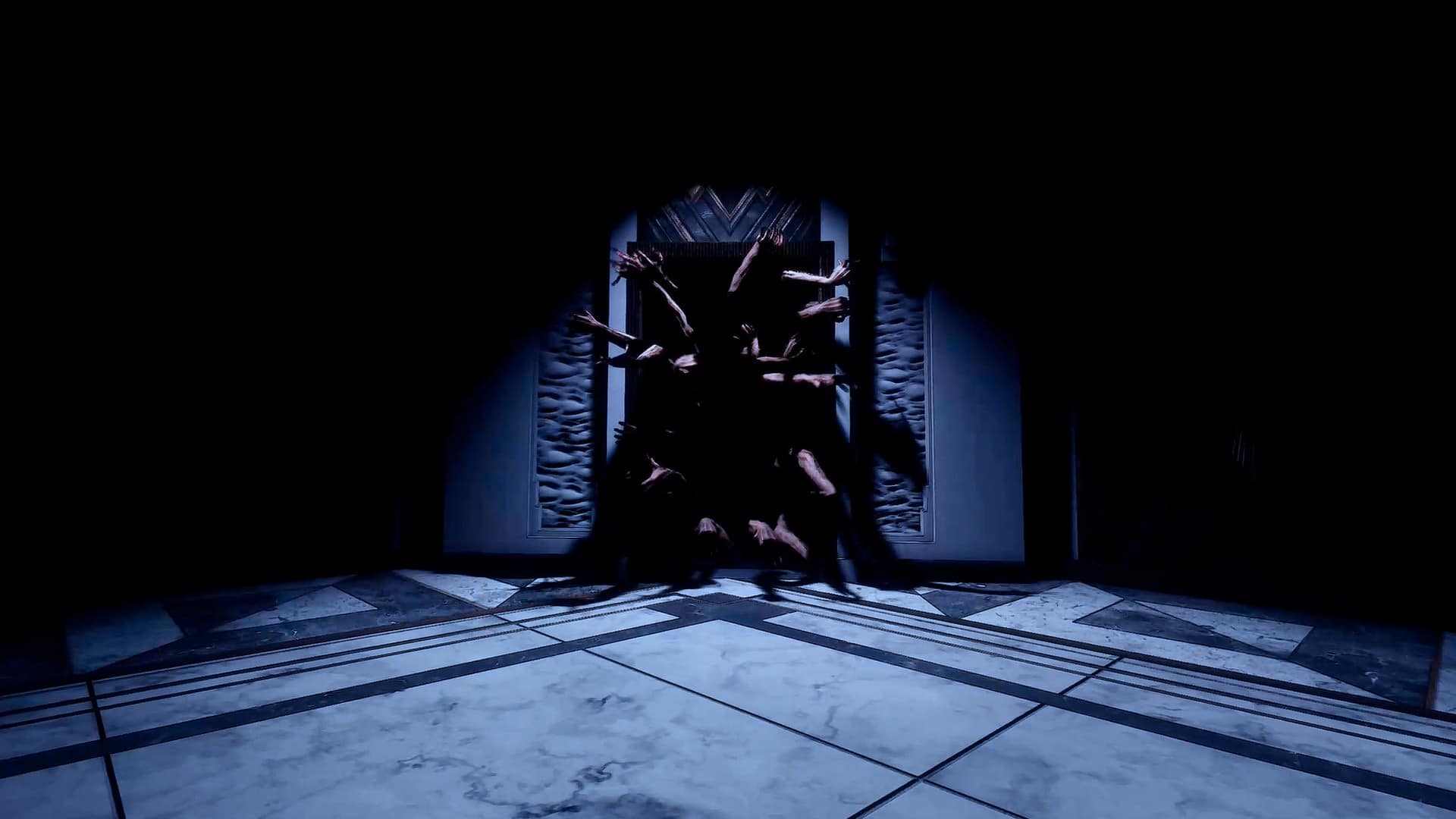It’s a time of plenty and a time of fear. And something else, a horror yet to manifest, lurks under the surface. This is Hinge from Arcadia VR, a psychological horror game that starts with a party.
During the intro, a noted philanthropist celebrates the completion of his new skyscraper and you’re invited. But the art deco facade masks something far more sinister and otherworldly about the building’s owner. Once night falls, the question becomes whether you can make it out alive with your sanity intact.
With Hinge, Arcadia VR blends history and the occult with a daring goal in sight: redefining what makes a game terrifying.
“There hasn’t been an AAA VR horror game since 2017 [and] there are so many unexplored possibilities for horror games in virtual reality,” Arcadia’s Oleg Smirnov said. “We tried to develop gameplay mechanics that are only viable in VR.”
Smirnov is likely referring to Resident Evil 7: Biohazard, the PSVR-exclusive horror game from Capcom. It’s available on PC and Xbox One as well, but the VR support is only on PSVR. Achieving that same level of success for Arcadia means doubling down on Hinge’s atmosphere to approach the concept of terror in a different, more immersive way. Smirnov feels they’re well-suited to the task.
“Hinge is our first PC VR game, but as a game dev studio, we’ve been existing for longer,” Smirnov said. “Three years ago, our team was working on the opening of the largest VR LBE venue [a kind of VR theme park experience] in Europe called Another World.”
Arcadia has three LBE venues in Russia, and another two were set to open in London and Paris respectively, when the COVID-19 pandemic derailed their plans. It wasn’t all bad, though.
“We’ve been planning to develop games for Steam VR for a long time,” Smirnov said. “But the pandemic just accelerated us working on that.”
The first step in creating their ideal VR horror atmosphere was getting Hinge’s setting right. Smirnov said the team started from the basic desire to scare players, but it had to be something they could “spice up” with Lovecraftian horror elements. What they ended up with was an eclectic cocktail of 1920s America and creeping dread.
“We decided that the player should be placed in the Great Depression, because that era is fraught with something depressing and desperate,” Smirnov said. “It didn’t seem difficult for us to fit these things together. The player can find similarities between 2020 and the 20s of the last century [and] these three components work great together because [much of] the work of H.P. Lovecraft falls precisely in the Roaring Twenties.”

Smirnov and the team didn’t settle for a surface-level trip into history, though.
The early 20th century was the height of rational thinking and belief in science, but there was a strain of darkness and superstition flowing alongside reason and logic. Smirnov said that’s what the team tapped into for Hinge, and Lovecraft is just the tip of the occult iceberg.
“Our game designer wrote over 100 documents and around 20 books specially for Hinge’s in-game environment. The information for these books was taken from real occultist’s books by Aleister Crowley and Alexandre Saint-Yves d’Alveydre.”
Though probably better known now as the subject of Ozzy Osbourne’s song “Mr. Crowley,” Aleister Crowley attracted a fair deal of notoriety throughout the first half of the 20th century. He claimed he contacted multiple spirits from other worlds and was even expelled from Italy in 1923 after a follower died during what was called a “sacrilegious ritual.”
Beyond influencing cults and writing arcane tomes, what Crowley and d’Alveydre did is show people there was much about the world they had yet to understand — and not all of it was benign. That sense of uncertainty and the fear it inspires permeates every corner of Hinge.
“We want players to feel like absolutely anything could be around the next corner, to feel like anything in the environment he should be afraid of,” Smirnov said. “We think we succeeded in making the atmosphere where the player feels like even the skyscraper is trying to kill them.”
While Hinge features multiple different monster types, some of which Smirnov said have never been seen before in horror games, don’t expect a bunch of ghouls jumping in your face as the main scare tactic. Smirnov was keen to avoid spoilers, but he did say the team is keen to avoid what they called the overused jump scare mechanic.

“We did a lot of research overall on the scariest things usually found in the horror genre, and we made our own combination of scares that works perfectly. First [on our list] is scares related to surrounding sound effects,” Smirnov said.
Since Hinge is a psychological horror game at its core, expect plenty of mind skullduggery as well. Smirnov said the second scare type they focused on revolves around “scares that play with your attention — when you look at some familiar subject, but at some moment it turns out to be a ghost.”
Beyond things going bump in the dark and dreadful night, the entire story messes with players’ perceptions of reality.
“The rules of the game are obscured for players,” Smirnov said. “You will not be able to fully understand what is happening in the game. You’ll have to put all pieces of the story together from scraps that you’ll find in the game and make conclusions by yourself.”

You’ll be able to draw those conclusions and experience Hinge for yourself once it launches on November 27 for SteamVR headsets and on the Oculus Rift PC store. Let us know what you think of Hinge so far down in the comments below!









